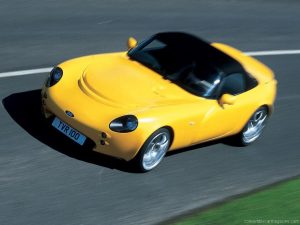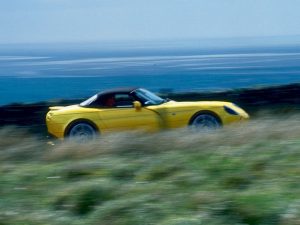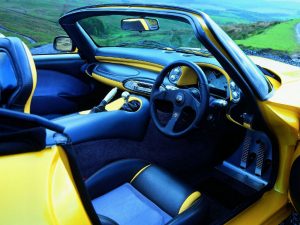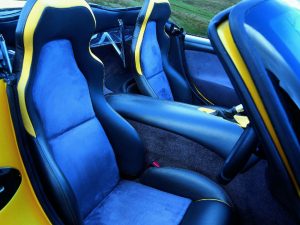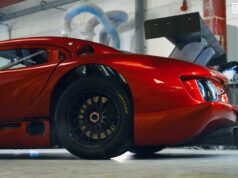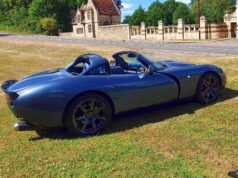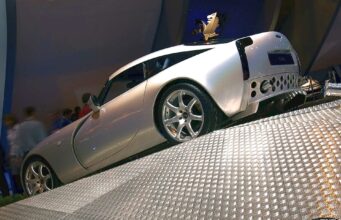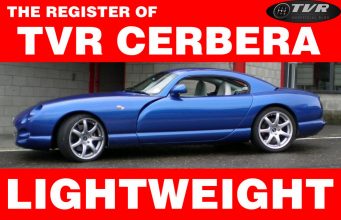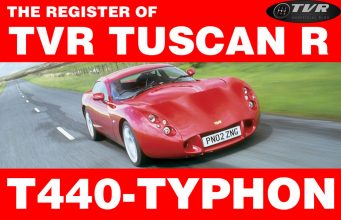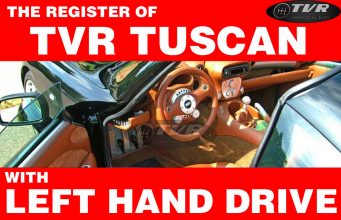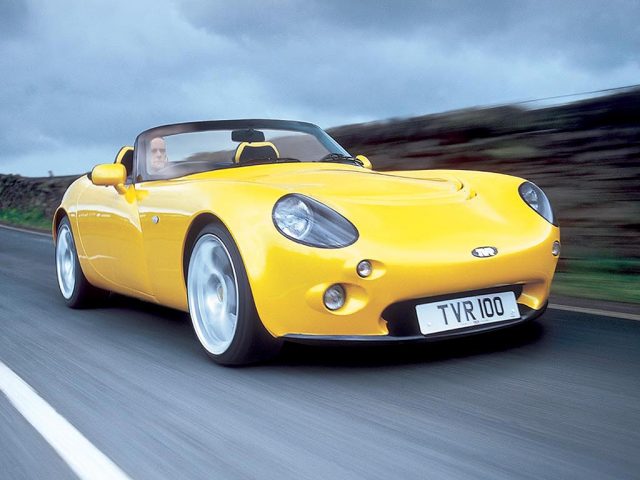
TVR Tamora’s DNA dates back to the 1991 TVR Griffith: stunning silhouette, bolted an impossibly powerful engine inside a tubular steel chassis. The more comfortable TVR Chimaera followed, then came the 2+2 TVR Cerbera and with it the first-generation AJP V8 engines. Then, 1999 saw the introduction of the Tuscan and it’s this car’s chassis, and wheelbase, that the Tamora shares, along with a mildly de-tuned version of its straight six Speed-6 engine. The TVR Tamora was introduced at the 2000 British Motor Show, the first cars were delivered to customers in 2001.
ENGINE
The engine was commonly known 3.6 litre version of TVR’s own straight six, pushing out 350 bhp at 7200 rpm and 290 ft. lb. of torque at 5500 rpm which will gave the car extremely brisk performance. Maximum revs was at 8000 rpm. It shared the same dry sump, 24 valve technology as the 4.0 litre Speed Six engine found in the Cerbera and the Tuscan as well as that found in the successful Tuscan R racing car. It did, however, sound different due to an all-new stainless steel and titanium exhaust system. Performance was on a par with much more exotic machinery with 60 mph coming up in 4.4 seconds and 100 mph in 9.5. Top speed is over 170 mph. Those figures were closer to the Porsche 911 than the Boxster, which felt positively tame by comparison. Not that driving a TVR were anything like a Porsche. Its engine had the characteristics of a racing power unit: rough at its 700rpm tickover, it smoothed out with more speed, producing a rousing bark all the way to its rpm limit.
ENGINEERING
Sharing the platform and engine with the TVR Tuscan, the Tamora undercuted its popular elder sibling and its retail price looked attractive to anybody considering a Porsche Boxster S or Mercedes SLK32AMG.
Handling was benign but involving with double wishbones and coil springs over gas filled shock absorbers and the ride maked it easy to use every day. Riding on the 16 wheels of the standard Tuscan (18 inch wheels are an optional extra) but with its own British developed and made Avon ZZ3 tyres, the handling had been fine-tuned so as to provide a very high level of grip in both wet and dry with a very progressive breakaway in the end. The steering was an all-new arrangement with electrical assistance that gave an informative but not intimidating level of feedback. Brakes were considerable cross drilled and ventilated discs all round (304mm front and 282mm rear) with four piston callipers at the front and the front roll cage and door beams are manufactured out of very strong T45 steel. Despite all this hardware, the composite bodywork and weight-saving construction methods meant that this car is the lightest of the current generation of TVRs at just over 1,000 kg.
The dials simple and the Tamora didn’t have the likes of ABS, EBD or ESP – instead it had three gear change lights that can be set to any amout of revs to tell the driver when best to shift.
COCKPIT
It was again the interior where the stylists and engineers surpassed themselves with a multi-function digital display, shift lights and two analogue dials for quick glance down viewing of speed and engine revs. There were two race-style bucket seats made out of lightweight composites to hold the driver and passenger in place and a floor mounted pedal box that was mounted through to the chassis.
According to some different figures we found, opinions are different concerning how many Tamoras were built from 2001 to 2005.



